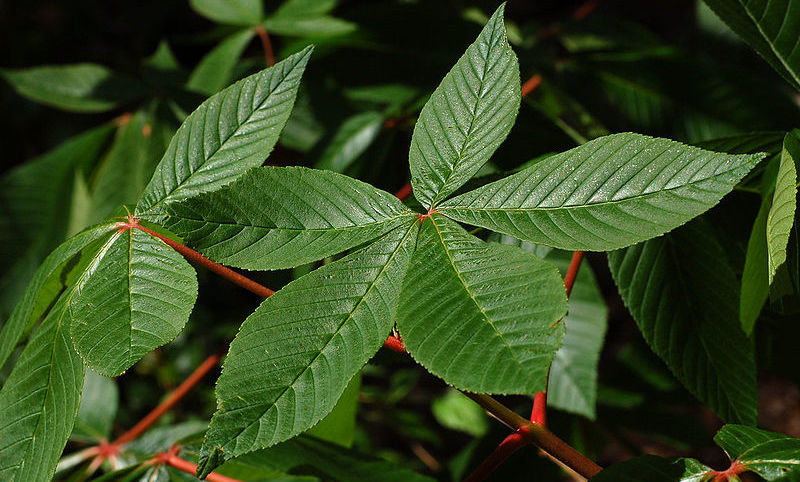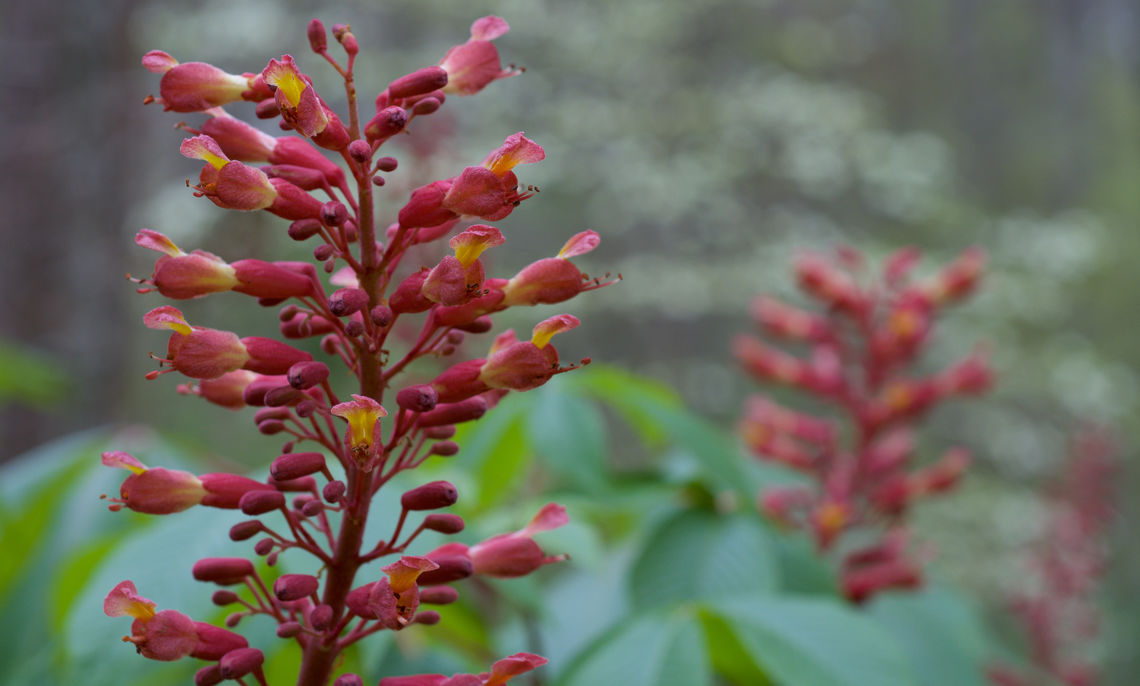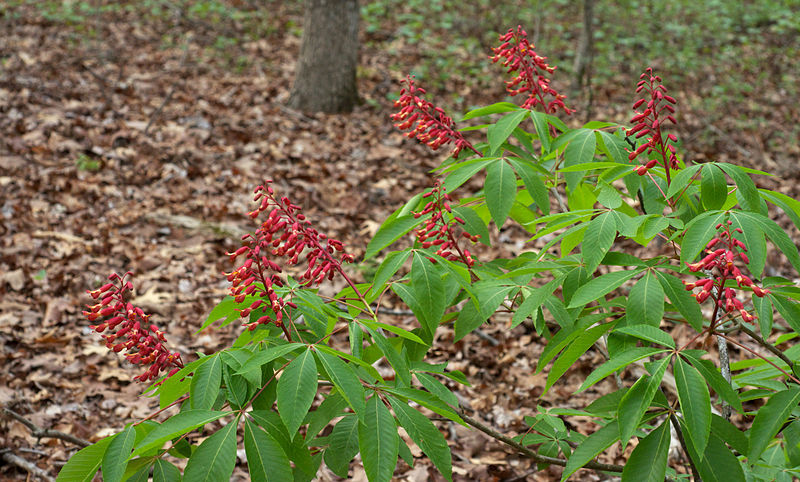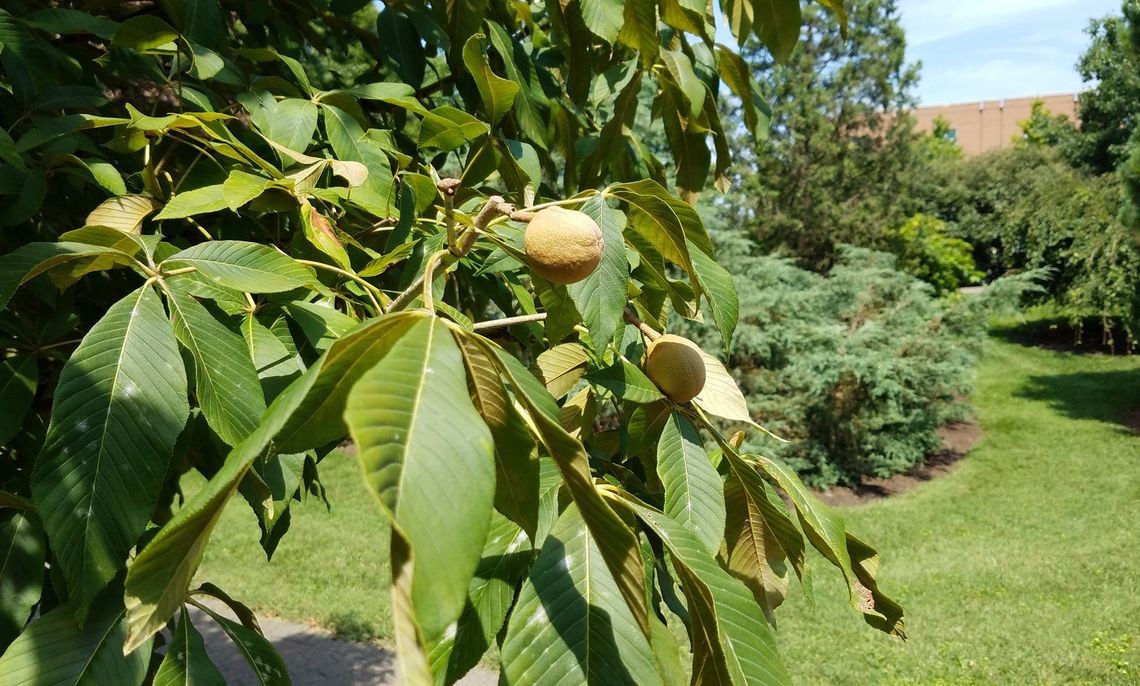Red Buckeye (Aesculus pavia)
Red buckeye leaves are composed of 7 long, dark green leaflets that are arranged circularly around the end of stems. The red flowers grow in loose, cone shaped clusters that grow upright. Even though the round brown buckeye fruits that the tree produces are poisonous to humans if eaten, children and adults have collected them as good luck charms for years. This tree attracts hummingbirds.
Family: Sapindaceae (Soapberry)
Characteristics: The dark green leaves are made up of seven 3-inch to 6-inch-long lemon-shaped leaflets, which are palmately compound (leaves radiate from a single point). Leaves have minimal color change in the fall. In April to May, red flowers appear in 3-inch to 6-inch-long, loose, upright terminal panicles (loose branching clusters). The tree produces dark brown buckeyes, which are encased in smooth, brown capsules. Bark is dark brown, relatively smooth, and tends to flake off with age. This tree usually grows as an upright tree with a rounded shape, though can also be shrub-like. It grows 15-20 feet high and wide.
Foliage: Deciduous (leaves lost seasonally)
Geographic Origin: Southeastern United States (native)
Cultivation Notes: Requires medium maintenance. Does best in full sun to part-shade. Prefers acidic, moist, and well-drained soil, though is tolerant to drought conditions and poor soil drainage.
Number on Campus: 3
Sources: Dirr, Morton Arboretum, Missouri Botanical Garden




